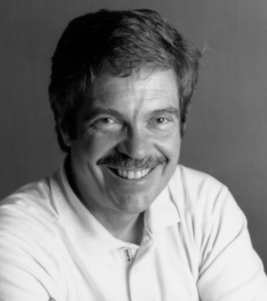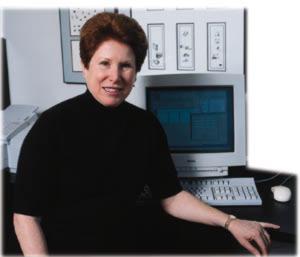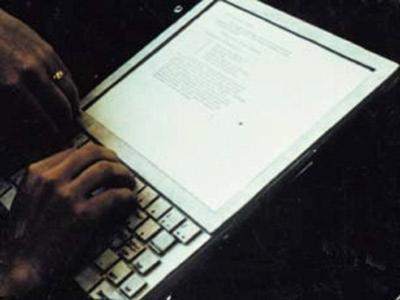| Alan Kay |
| Written by Historian | |||
Page 1 of 2
The personal computer world has more than its share of visionaries. If you know something about technology, no matter how little, then you have a licence to speculate. Most guesses are proved wildly wrong in the short term and even more wildly wrong in the long term - apart, that is, from the obvious truth that computers are getting more powerful and cheaper. This very trend causes a sort of deja vu among pundits. What was once a rare technique found only in well funded research labs eventually finds itself "rediscovered" as a mass market product when the cost of the hardware falls. This makes the history of computing difficult to sort out because everything has been invented at least twice... Often when the personal computer people claimed to be the true inventors of something because they made it practical, the pure researchers pointed out "but we did that back in 19xx".
Alan Kay is one of those pure researchers but he has had the privilege of seeing a more direct connection between his ideas and marketable products.
Alan Curtis Kay, born May 17,1941
Alan Kay is a theoretical computer scientist of a very strange sort. Instead of having theories of how computing hardware or software might be implemented, what you might call the inside view, he thought about how the machine should be used - the outside view. Born in Australia, he grew up in Massachusetts and New York. His mother was an artist, a musician, and his father a scientist. This gave him a cross cultural view that probably influenced his choice of academic study - mathematics and molecular biology at the University of Colorado - an interesting combination. He learned to program in the Air Force and then did a PhD in computing at the University of Utah. At the time Utah was an important centre for graphics research with Ivan Sutherland's Sketch Pad system being the best known example. However, you can trace many of the ideas that we take for granted back to Sutherland's research as well as a collection of important people. While at Utah he created Flex, a desktop personal computer. It had graphics and multiple windows but the user interface was so awful that it repelled its users rather than attracting them. Kay then started to read some pop psychology and philosophy. Marshal McLuhan told him that the medium was the message and he thought about the computer as part of the creative communications process. He looked at the work of Seymour Papert and Logo. Based on the ideas of Piaget, Papert had developed a programming language for children. The core of the idea was the now well known turtle. Less well known was Logo's persistent environment that introduced vague notions of objects. Kay then read Piaget and later the cognitivist psychologist Jerome Bruner. At the time all of these ideas were part of the popular academic culture of the west coast - like Zen and LSD. Kay became convinced that a good computer interface should be easy enough for children to use. Xerox ParcHe spent a short time at the Stanford AI research group and then in 1970 moved to the newly formed Xerox Parc (Palo Alto Research Center). Xerox, the copier company, was very worried about the prospect of the paperless office so it set up a research group to put it in the forefront of the computer revolution. The group succeeded but Xerox management failed to understand any of it and so it never made the impact it deserved to. The boss of Parc was Bob Taylor who had previously been the projects manager at ARPA (the Pentagon's Advanced Research Projects Agency). Although these days Parc gets most of the credit, much of what it did was based on work first done by Douglas Engelbart and paid for by ARPA. Engelbart invented the mouse and the interactive style of working in the late 50s. In 1968 Kay saw a demo of Engelbart's mice and other interactive devices - it was inspiration: "We thought of Douglas as Moses opening the Red Sea. You know he was like a biblical prophet ... they were actually doing the kinds of things that people still dream of today... " Today Engelbart is one of the almost-forgotten prophets. Kay formed the Learning Resource Group at Parc and set about building his interim dynabook - the name he coined for his portable computer with everything. SmalltalkThere were a lot of very good computer scientists at Parc and Kay found himself surrounded by them. It is very difficult to sort out exactly what Kay did and how much he simply inspired others to try to meet his goals. Certainly in each area that Kay was involved in there are other able computer scientists whose names cannot be left out. In the invention of the Smalltalk language and system, Adele Goldberg figures large.
Adele Goldberg, born 1945 In the creation of the hardware - the Alto - Charles Thacker and others take the credit. Even the design of the Alto's software was carried out by Butler Lampson and others. What Kay did do was to take Smalltalk to the classroom and see how it worked with children - the Smalltalk kids. DynabookClearly the key idea was the Dynabook, a tablet like PC with nearly eternal battery life and software aimed at giving children access to digital media and facilitating education and learning and the importance of interface and quality. In this respect Kay was playing the same role that Steve Jobs did in Apple. He even mocked up a dynabook complete with clay weights to see what it would feel like in an attention to cosmetic detail very similar to Job's concern over the Apple II and the Mac's appearance.
The Dynabook From today's perspective the overall dynabook concept looks misguided. For example, one of Kay's principles was that whatever the Dynabook did it should always improve on the equivalent process involving paper. A machine that behaves like intelligent paper is a good interim product - it gives you drawing and painting programs and the spreadsheet (which surprisingly Parc did not invent) but it isn't exactly futuristic. It's a bit like saying that all modes of transport should be like walking - true at a very early stage of development but very limiting. The parallels between Parc and Apple are even more pronounced than Kay's attention to cosmetic detail. The whole outfit was run in a very relaxed and semi-anarchic manner - something that the Xerox management found difficult to understand. It was very much like an academic Apple with no responsibility to produce real products. In 1987 Alan Kay, Adele Goldberg and Dan Ingalls won the ACM Software Systems Award for the Smalltalk project. |
|||
| Last Updated ( Monday, 17 August 2015 ) |



